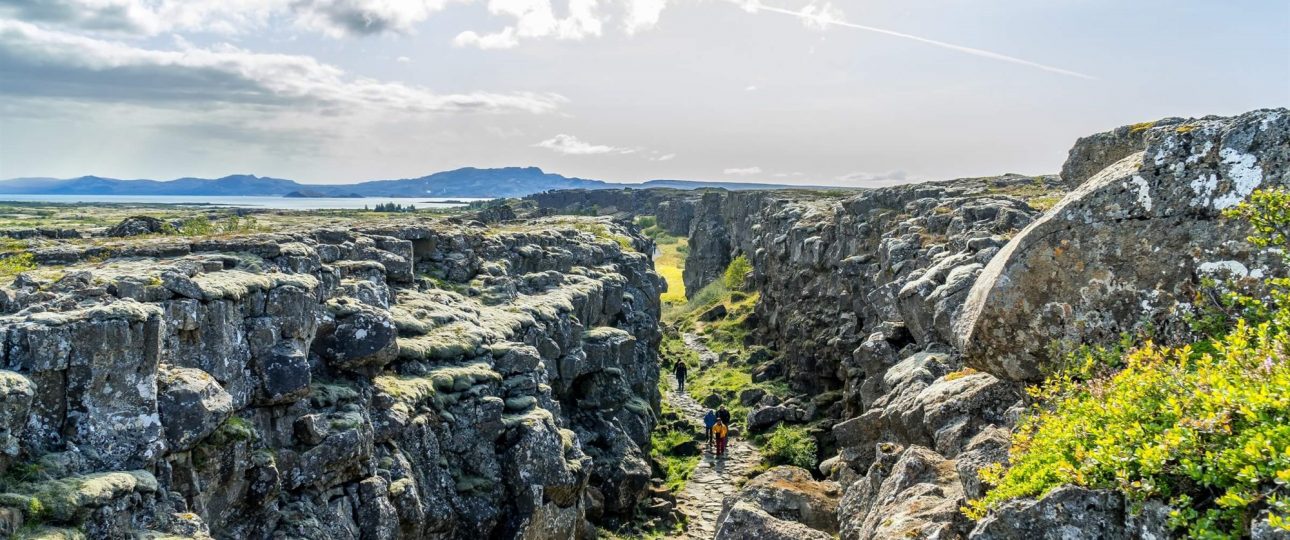Introduction to Þingvellir
Þingvellir, pronounced “Thing-vet-lir,” is a remarkable national park in Iceland, renowned for its historical, geological, and cultural significance. As someone who has explored this extraordinary site, I’m eager to share its unique features and the rich experiences it offers.
Unique Features of Þingvellir
Þingvellir stands out for several compelling reasons:
- Geological Significance: The park is located on the Mid-Atlantic Ridge, where the North American and Eurasian tectonic plates are slowly drifting apart. This geological activity has created a landscape filled with rift valleys, fissures, and clear lakes.
- Historical Importance: Þingvellir was the site of Iceland’s first parliament, the Alþing, established around 930 AD. This assembly was a cornerstone of Icelandic governance and culture until 1798, making it one of the oldest parliaments in the world.
- Cultural Heritage: The park is deeply embedded in Icelandic folklore and history, serving as a symbol of national identity and unity.
Best Time to Visit Þingvellir
Your experience at Þingvellir can vary greatly depending on the season:
- Summer (June to August): Enjoy long daylight hours and mild weather, ideal for hiking and exploring the park’s expansive landscapes.
- Autumn (September to October): Witness the vibrant fall foliage and enjoy a quieter atmosphere with fewer visitors.
- Winter (November to March): Experience the enchanting Northern Lights, though be prepared for cold and potentially challenging weather.
- Spring (April to May): See the landscape come alive with blooming wildflowers and the return of migratory birds.
How to Get to Þingvellir
Reaching Þingvellir is straightforward, whether you’re coming from Reykjavik or other parts of Iceland:
- By Car: Renting a car allows you to explore at your own pace. From Reykjavik, take Route 1, then turn onto Route 36. The drive takes about 45 minutes.
- By Bus: Several companies offer tours from Reykjavik to Þingvellir, a convenient option if you prefer not to drive.
- Guided Tours: Many guided tours include Þingvellir as part of the Golden Circle route, which also features Geysir and Gullfoss waterfall.
Local Transportation Within Þingvellir
Once at Þingvellir, navigating the park is easy:
- Walking: Explore the park’s beauty on foot via well-marked trails suitable for all fitness levels.
- Biking: Rent a bike to cover more ground. The park offers bike paths that provide a fun way to enjoy the scenery.
- Guided Tours: Opt for guided tours that offer transportation within the park and insights into its history and geology.
Things to Do in Þingvellir
Þingvellir offers a variety of activities for visitors:
Explore the Rift Valley
Walk through the rift valley and stand between two continents. The dramatic landscape, with its unique rock formations, offers stunning views perfect for photography.
Visit the Almannagjá Gorge
This geological marvel marks the boundary between the tectonic plates. It’s an excellent spot for hiking and appreciating the natural beauty.
Discover Öxarárfoss Waterfall
Located within the park, this picturesque waterfall is easily accessible and provides a serene setting for a picnic or relaxation.
Snorkeling in Silfra
For the adventurous, snorkeling in the Silfra fissure is a unique experience. The crystal-clear waters offer exceptional visibility, revealing an underwater world like no other.
Historical Sites
Visit the Þingvellir Church, a charming 19th-century church, and the Law Rock, where laws were proclaimed during the assembly.
Practical Travel Tips
Enhance your visit to Þingvellir with these practical tips:
- Dress Accordingly: Iceland’s weather can be unpredictable. Dress in layers and be prepared for wind and rain.
- Stay Hydrated: Bring a reusable water bottle. Icelandic water is clean and safe to drink.
- Respect Nature: Stick to marked paths to protect the fragile ecosystem and follow Leave No Trace principles.
- Photography: Capture the stunning landscapes during early mornings or late afternoons for the best lighting.
Summary of Facts about Þingvellir
- Þingvellir is located in Iceland and is known for its geological and historical significance.
- It is situated on the Mid-Atlantic Ridge between the North American and Eurasian tectonic plates.
- Þingvellir was the site of Iceland’s first parliament, established around 930 AD.
- The best time to visit is during summer for warm weather or winter for the Northern Lights.
- It can be accessed by car, bus, or guided tours from Reykjavik.
- Local transportation includes walking, biking, and guided tours within the park.
- Activities include exploring the rift valley, visiting Öxarárfoss waterfall, snorkeling in Silfra, and discovering historical sites.
- Travel tips include dressing in layers, staying hydrated, and respecting nature.
Final Thoughts
Visiting Þingvellir is a journey into the heart of Iceland’s natural and historical heritage. Whether you’re exploring the geological wonders, delving into the rich history, or simply enjoying the breathtaking views, this destination offers an enriching experience. Prepare for an adventure that will leave a lasting impression.




